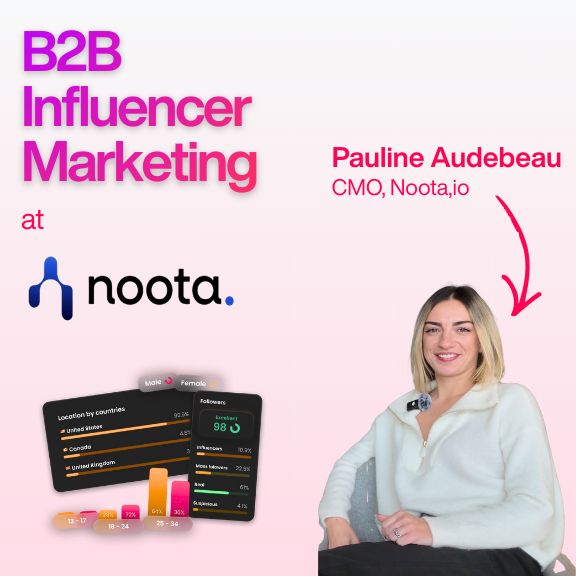Blog & Articles
Your ultimate ressource for the creator economy
Methodology & Rankings
About Favikon, rankings, tools & much more.
Insights
The recipe behind Favikon's viral & coveted rankings.
Free tools to power your influencer marketing workflows.
See Favikon users' success stories.
Get access to all Favikon rankings.
Become a Partner
Become an Affiliate
About the team behind Favikon
The place to talk creator economy, together


Featured Rankings

Here is the Top 50 Rising Video Creators on LinkedIn. Video is quickly becoming the platform’s most powerful format, with creators gaining more reach and engagement than ever. As Gen Z grows its presence and tools like BrandLink and Thought Leader Ads support content creation, LinkedIn is doubling down on video. This ranking, made in partnership with OpusClip, celebrates the creators leading this shift and aims to inspire anyone ready to start sharing through video.

Here is the Top 50 Rising Video Creators on LinkedIn. Video is quickly becoming the platform’s most powerful format, with creators gaining more reach and engagement than ever. As Gen Z grows its presence and tools like BrandLink and Thought Leader Ads support content creation, LinkedIn is doubling down on video. This ranking, made in partnership with OpusClip, celebrates the creators leading this shift and aims to inspire anyone ready to start sharing through video.


Capucine Munuera is currently pursuing a Master's in Social Media Strategy at Sup de Pub in Paris while working as a marketing manager at Favikon. Her professional journey includes significant roles such as marketing responsibilities at Favikon and prior experiences at organizations like CLIC&MOI and Carré Cointreau. Capucine's expertise lies in developing and executing marketing strategies, leveraging her hands-on experience in social media management and brand communication.
Check Brand Deals
1. What is ROI in marketing?
ROI, or return on investment, measures whether your investment was efficient or profitable. In influencer marketing, it shows if the money spent on influencers brought worthwhile results, like sales or visibility. To calculate ROI effectively, you need clear campaign objectives. Goals help you choose the right influencers and plan collaborations that align with your strategy.
Influencer marketing typically achieves three main objectives. First, it boosts brand awareness—when consumers recognize your brand, they’re more likely to buy from you. Collaborating with influencers with large audiences across different platforms can significantly enhance visibility. Second, it drives engagement, as being featured in an influencer’s post encourages their followers to check out and interact with your brand.

Finally, influencer marketing can greatly boost your sales. In order to do that though, you need to work with the right influencers. You need to choose influencers that share your brand’s values and have a high engagement rate, as their followers will be more likely to like and buy your products. By targeting the right audience, you will see your sales skyrocket. And if you are skeptical about the impact of influencer collab, you should definitely read our article on how influencers affect consumer behavior.
One last thing to remember is that ROI differs on the social media you are choosing. For instance, it is quite easy to get views on TikTok, but harder to gain followers whereas on Instagram it is quite the opposite and the number of followers is more representative. So you need to keep that in mind when setting up your objectives and evaluating your ROI.
2. Define Clear Objectives and Key Performance Indicators (KPIs):
Before launching a campaign, establish specific, measurable, achievable, relevant, and time-bound (SMART) goals. Common objectives include increasing brand awareness, boosting engagement, driving website traffic, or generating sales. Align your KPIs with these goals to effectively measure success.

3. Track and Measure Campaign Results:
To maximize the impact of your influencer marketing efforts, it’s essential to effectively track and analyze campaign performance. Here’s how Favikon can help:
- Analytics Tools: With Campaign Tracking of Favikon, you gain access to AI-powered insights that track key metrics such as impressions, reach, engagement, clicks, conversions, and sales. The Campaign Tracking allow you to accurately measure the results of your campaigns in real-time across different social platforms, giving you a comprehensive overview of creator performance.
- Custom Tracking Links: Provide influencers with unique affiliate links, UTM parameters, or personalized landing pages to accurately attribute traffic and conversions to specific campaigns.

4. Calculate Influencer Marketing ROI:
Use the following formula to determine your ROI:
ROI (%) = [(Revenue Generated - Campaign Costs) / Campaign Costs] × 100
Where:
- Revenue Generated: Total income directly attributed to the influencer campaign.
- Campaign Costs: All expenses related to the campaign, including influencer fees, product samples, shipping, content production, and additional marketing expenditures.
Example Calculation:
If you invested $5,000 in an influencer campaign and it generated $15,000 in revenue:
ROI = [($15,000 - $5,000) / $5,000] × 100 = 200%
This indicates a return of $2 for every $1 spent.
To simplify the calculation process, consider using online tools designed for this purpose. Here are some recommended calculators:
inBeat's Influencer ROI Calculator: This tool allows you to input your campaign budget and influencer metrics to estimate reach, engagement, and impressions, providing a clear picture of your potential ROI.
Rows' Influencer Marketing ROI Calculator: With just five inputs, this calculator offers an easy-to-understand metric that quantifies your ROI, helping you assess the effectiveness of your influencer marketing campaigns.
Mailmodo's Influencer ROI Calculator: An easy-to-use tool that helps you determine the profitability of your influencer marketing campaigns by calculating your ROI based on inputs like landing page visits, conversion rates, and campaign costs.
The Media Ant's Influencer Marketing ROI Calculator: This calculator measures the success of your influencer campaigns by analyzing campaign costs and returns, aiding in strategic marketing decisions.
Remember to always calculate your ROI once your campaigns are over. Analyze your results to see if they were profitable. This will also help you determine if you want to work with these influencers again or not. There are many ways to calculate ROI, it all depends on the objectives and goals that you set before launching your campaign. It is important to know if your collabs were profitable because you want to know if you should work with these influencers again. Especially since long-term partnerships are becoming more and more popular. These types of partnerships are great because they are seen as more genuine thus they are often more effective than one-time deals.
Also See 👀:
The Ultimate Guide to B2B Influencer Marketing
5 reasons to use Influencer Marketing Tools
The different types of influencer marketing campaigns
How are B2B Influencers Paid?
How to find B2B influencers?
Related Articles
See all the articlesResources











.png)







.png)




